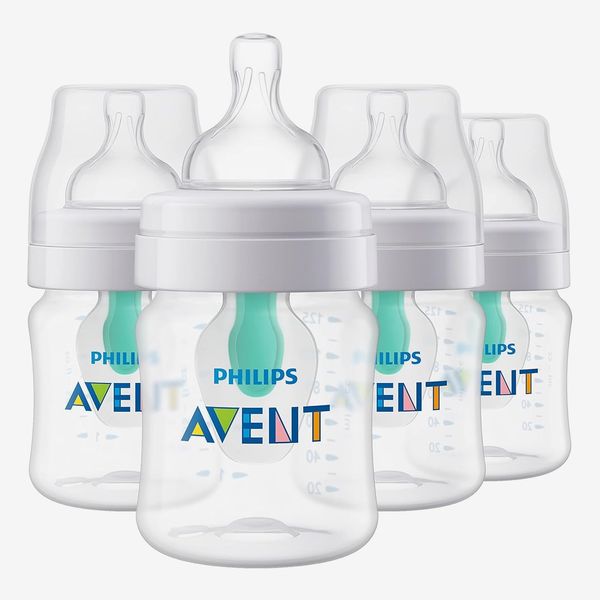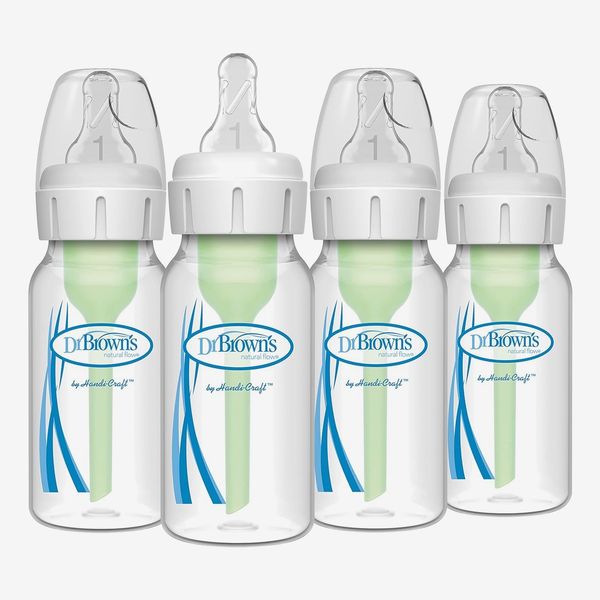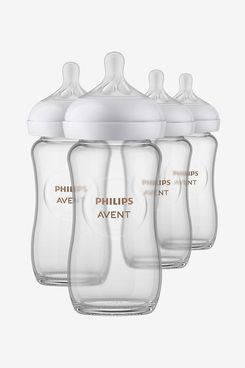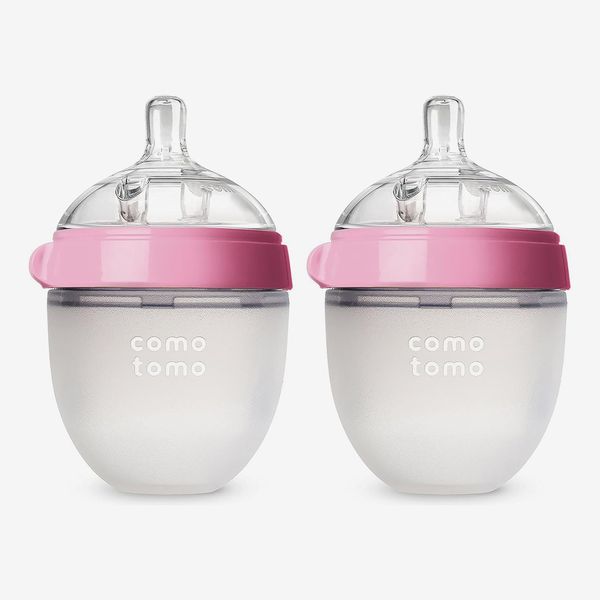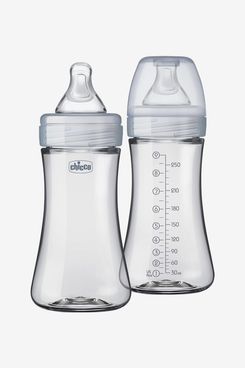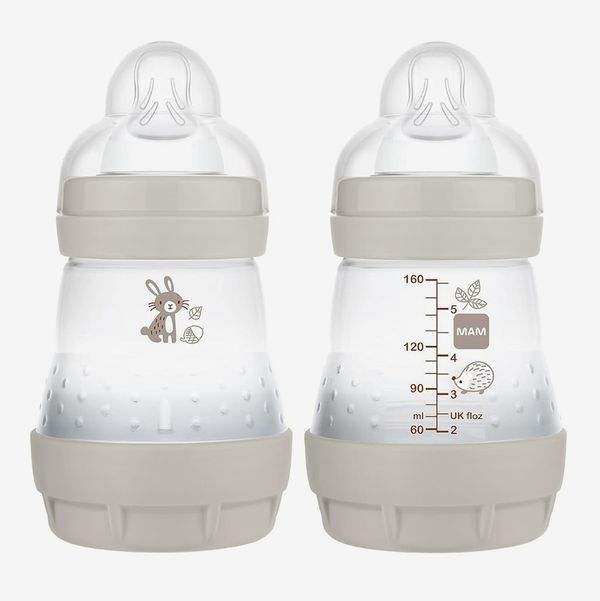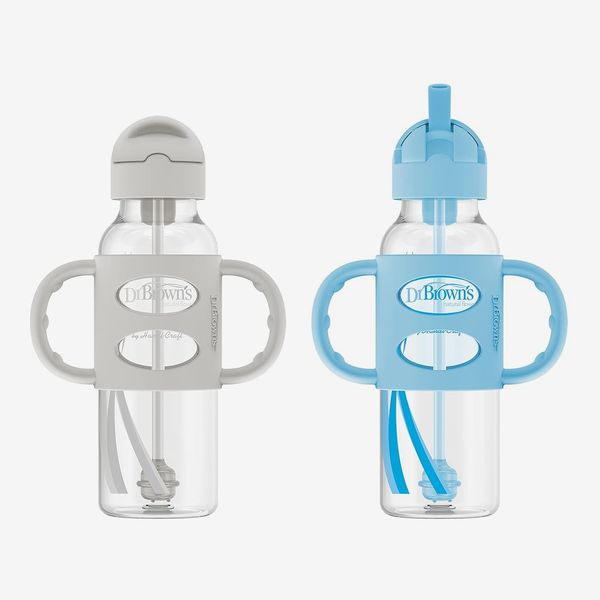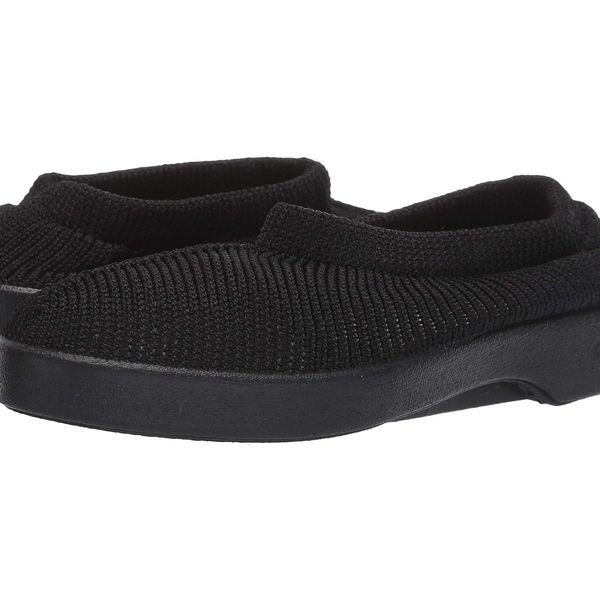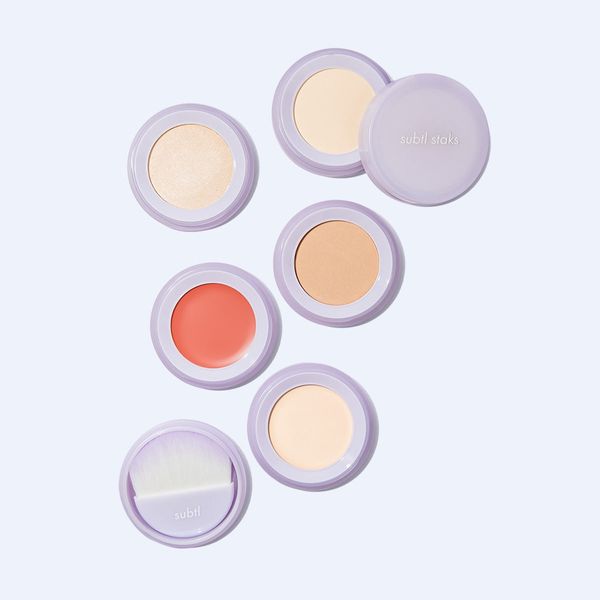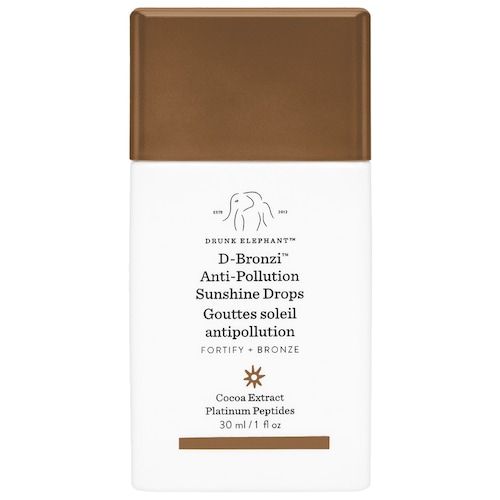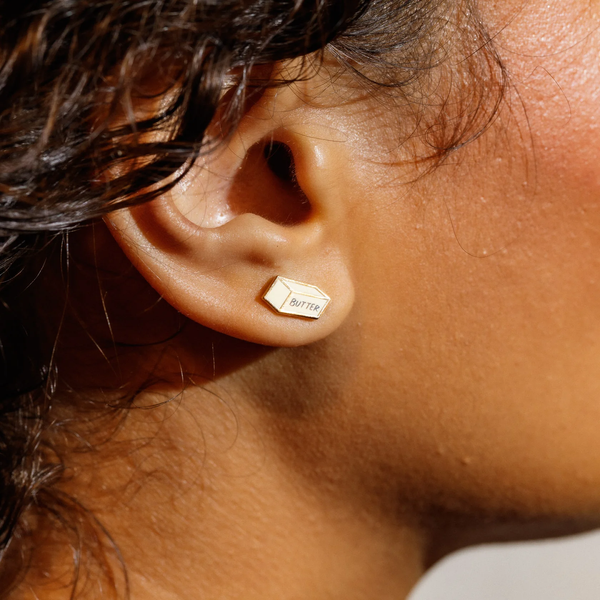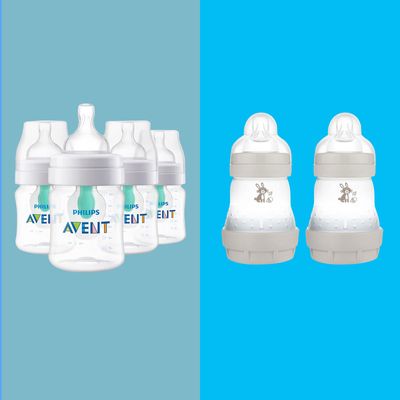
In this article
As soon as you deliver your adorable, squishy newborn, your life is — nearly immediately — ruled by the process of feeding them. There are a number of ways to do that, of course (breastfeeding, formula feeding, pumping, chestfeeding, and any combination thereof), but no matter what path you take, you will, most likely, use a baby bottle at some point. Maybe it’s so you can take a break and your partner can do a feed, maybe it’s months after their birth when you go back to work, or maybe it’s on day one. As a mom of three, I can say there is probably no perfect baby bottle because so much depends on your individual child. With my first child I mostly nursed, and so I gravitated toward a boob-shaped bottle (not out of any real research, more instinct). These bottles were fine, but I never loved them — which was also okay, because I really didn’t use them very often. For my second and third kids, who both received quite a bit of pumped milk, I did more research and landed on the Philips Avent bottles with the anti-colic inserts (these are my best overall pick, more on that, below).
Ultimately, though, the best baby bottle is one that your kid happily takes, but there are still qualities that separate the good from the great. A great baby bottle is one that you can wash in the dishwasher. Newborns eat 8 to 12 times every 24 hours — that’s a lot of time elbow-deep in hot soapy water. All my picks below are dishwasher-safe. (For nipples and other small parts, I definitely recommend getting a dishwasher basket to help keep everything together.) All but one of my picks have gas and colic prevention (and the exception is a bottle suitable for an older baby). And you’ll want your choice to be able to grow with your baby, from newborn weeks up until their first birthday — babies are expensive enough without having to buy a new bottle every few months. So, if you’re looking for a place to start, I spoke to a lactation counselor, feeding experts, and seasoned parents to find out the best baby bottles, from plastic baby bottles to glass baby bottles, and the best baby bottles for pumping too. And for other feeding needs, check out our stories on the best wearable breast pumps and the best nursing pillows.
What we’re looking for
Material
Generally, bottles are made of plastic, silicone, or glass. There’s no perfect material: Glass is eco-conscious and dishwasher-safe, but heavy and breakable. (Even a strong, older baby may struggle to feed themselves with a glass bottle, and parental hands can definitely fatigue holding one.) Silicone bottles are a good choice for parents who worry about plastics but don’t want glass, though they can sometimes absorb food smells in the dishwasher. Plastic bottles are the most common — they’re lightweight and inexpensive — but some folks have concerns about the material breaking down, especially if you’re heating them. If you choose plastic, look for BPA-free.
Gas/Colic Prevention
Babies who drink from a bottle are more likely to deal with gas pains and spit-up than babies who are exclusively breastfed, simply because they take in more air. Some bottles use additional parts and pieces to reduce air intake. However, these extra parts are generally a pain to clean (they usually require a dedicated straw cleaner), so I’ve listed them as the come up.
Size
A newborn’s stomach is itty-bitty, so you don’t need a large bottle when you’re serving one to three ounces at each feed. Meanwhile, a 10-month-old’s stomach can hold two veggie burgers at a time (I’ve seen it), and they may want an eight-ounce bottle to wash it down. If your brand of choice makes bottles in multiple sizes, it’s nice to be able to “graduate” to a bigger one when your baby levels up.
Nipple Flow Range
Similarly, newborns don’t totally understand how to eat, and a fast flow of milk can leave them choking and gagging (and leave you having wasted a precious feed). Your bottle brand should make nipples with a range of “flow” rates — slow ones (usually called stage 1 or even 0) for newborns, up to faster ones that are called stage 3 or 4 for babies closer to age 1. There’s nothing wrong with keeping your baby at the slow-flow newborn nipple, of course, but it can be nice to speed up their feeds when they get a little older and can handle the faster flow.
Best baby bottle overall
Material: BPA-free plastic Gas/Colic Prevention: Yes, via an insert
Size: Available in 4oz., 9oz., and 11oz. sizes Nipple Flow Range: Size 1 included, up to level 4 sold separately
When I was looking for a bottle for my kids, I wanted protection from gas and colic, but I wasn’t willing to wash a million tiny parts. The Philips Avent bottles with the anti-colic inserts were the natural conclusion. They work, too: I found that using them meant that my second and third kids spit up way less than my first did. (I know I can’t prove it was the bottles, but I really do think they helped!) As I learned, bottle-fed babies, on the whole, take in more air than their breastfed friends because, well, a bottle has air in it, and the human chest does not. This leads to more air in their bellies, and therefore gas and spit-up are more common. My goal was to minimize this side effect, and the Avent bottles did a great job of it. The insert is a single part that works to draw air away from the nipple itself, meaning the nipple is always full of milk, not air, even when horizontal. The insert lifts right out when you pop a nail under it, and since it’s only one part, it’s pretty easy to scrub clean with a traditional bottle brush.
That’s not the only thing I liked about these bottles, though: They were easy to hold thanks to a curve for your hand, came in multiple sizes for when my hungry baby needed more milk, and stacked neatly in diaper bags because of the flat top on the bottle caps. Amanda Glenn, a certified lactation counselor who runs the popular Instagram account @exclusive_pumping, polled her community of 107,000 followers and they agreed these are their favorites, too. “The bottles are compatible with Spectra breast pumps — being able to pump into the same bottles your baby takes saves a ton of time and effort,” says Glenn.
Best less-expensive baby bottle
Material: BPA-free plastic Gas/Colic Prevention: Yes, via their internal vent system Size: Available in 2oz., 4oz., and 8oz. sizes
Nipple Flow Range: Size 1 included, up to level 4 sold separately
“I almost always recommend Dr. Brown’s,” says Mallory Whitmore, a.k.a. @theformulamom, who is also the lead educator at Bobbie, a subscription-based formula brand. The biggest reason? The internal vent system, which involves a small, sectioned silicone ring that fits into what looks like a very long, rounded funnel. It’s got a unique ability to reduce gas and reflux due to the way it reduces air inside. “I know that when parents hear and see all the internal parts of this bottle system, they might look to another bottle choice, but it is the gold standard in my practice as a pediatric occupational therapist and feeding specialist,” says Judy Delaware, O.T., one half of the popular feeding resource account @feedinglittles. “The internal vent system works for both gas and reflux, as this bottle system is designed to eliminate internal pressure in a way that no other bottles can,” she says. Paige Fowler, a mom of four who shares her family’s life on @ourhomepaige, used them with all of her kids, too. “All four of our babies were bottle fed, and every single time I would try the newest, most popular bottles. And every single time, I ended up using Dr. Brown’s,” she says. “They were always the one our reflux-y babies liked the best and had the fewest issues (like gas and spit-up) with.” One notable downside — one that Whitmore co-signs — is that the vent system leads to a lot of small parts that usually need to be hand-washed, even if you have a dishwasher basket. This is why I didn’t select them as best in class — I think it’s important to be able to easily wash your bottles, and the Avents also offer the anti-gas and colic vents that the experts like in the Dr. Browns. Still, there are some other pluses: They don’t leak, they come in two-, four-, and eight-once sizes, Dr. Brown’s makes a pacifier that is the same shape as the nipple (this is surprisingly handy), and if you have a Medela breast pump, you can screw the bottles directly onto your flanges.
Best glass baby bottle
Material: Glass Gas/Colic Prevention: Yes, via vents in the nipple itself Size: 4oz. or 8oz. Nipple Flow Range: Size 2 included, sizes 1–5 sold separately
Strategist writer Lauren Ro used and loved these bottles. “I love that they’re made of sturdy glass, and even though they’re definitely bulkier and heavier than plastic bottles, they feel more sanitary to me because I can clean them with really hot water,” she told me. “They also feel really nice in hand, and I especially love the natural-flow nipples that I used with them. And because of how thick the glass is, I found — not sure if it’s true! — that it insulated the milk better, keeping it warmer (or cooler) for longer. It also warmed up faster when I dunked it in hot water,” she says.
The nipples on the Philips Natural are also different from those on the anti-colic Avents: “It’s because the baby controls the flow of milk and it doesn’t leak,” says Glenn. “Plus, it’s durable, long-lasting, and easy to clean because there aren’t a ton of parts to wash.”
Best silicone baby bottle
Material: Silicone Gas/Colic Prevention: Yes, via vents in the nipple itself Size: 8oz. Nipple Flow Range: Size 1 included, up to level 3 sold separately
My sister-in-law, a mom of four, chose these for when her kids used a bottle. “My favorite thing is that they’re silicone, so they’re dishwasher-safe without leaching plastics,” she told me. “Also, they’re easy for tiny hands to grip when they’re a little older, and they have a good wide nipple so you can go back and forth between breast- and bottle feeding without the kid caring,” she said. Catbird creative director Leigh Plessner also recommends these bottles — she says that “like a Champagne coupe, [it] is shaped awfully like a breast.” Another friend echoed that she chose them because they were “squishy” and “resembled a boob” but did caution that if you ever use European formulas with them, which use a one-to-one water-to-powder ratio, you may find yourself with an extremely full bottle, since these max out at an eight-ounce size.
Best hybrid baby bottle
Material: Polyamide, plastic, and Invinci-Glass Gas/Colic Prevention: Yes, via vents in the nipple Size: Available in 5oz. and 9oz. sizes
Nipple Flow Range: Size 1 included, up to level 4 sold separately
These clever little bottles are a great compromise for parents who want glass bottles but not the weight: They have one superthin layer of glass. “It’s glass on the inside, so the milk will only touch glass, but plastic on the outside, so you don’t have to worry about the bottles breaking,” explains Glenn. “If avoiding plastic is important to you, this bottle is perfect.”
I also like that they come in a nine-ounce size — many bottles max out at eight ounces — and how easy the bottles are to clean. (Although they do note that for stubborn breast-milk residue, you may have to do a quickie hand-wash first with soap that can cut through it. Formula doesn’t stick quite as much.) They’re also comfortable and easy to hold since they’re so lightweight.
Best baby bottle for travel
Material: Silicone Gas/Colic Prevention: Yes, via vents in the base
Size: 5oz. and 9oz. Nipple Flow Range: Medium flow included, fast and slow flow sold separately
Strategist senior editor Ailbhe Malone raved about these bottles, which are made to be sterilized in just three minutes in the microwave. “We traveled a lot when my daughter was young, and it was a relief to know that wherever we were, her bottles were easy to sterilize,” she says. Malone used both the five-ounce- and nine-ounce-size bottles and still uses the nine-ounce bottles for her toddler’s evening milk. She adds: “The lids were also incredibly secure, we brought filled bottles of milk through airport security, on planes, and on trains — we never once had a spillage.”
Best baby bottles with a straw
Material: BPA-free plastic Gas/Colic Prevention: No
Size: 8oz. Nipple Flow Range: N/A
Many pediatricians will want your baby to switch from bottles to cups by age one, so it’s a good idea to have them start practicing with a straw cup around nine months so they can get the hang of it. My friend Amanda, a mom of two, said that while she used the Avent bottles for her kids, she found the straw/bottle hybrid cups Dr. Brown’s offers to be a great tool for helping her babies learn to drink from a straw. “The weight helped them learn the difference between drinking from a nipple and drinking from a straw while still being soft like they were used to,” she says. “Plus the familiar shape made it so I didn’t get screamed at for taking away their bottles!”
Our experts
• Judy Delaware, pediatric occupational therapist and one-half of the feeding resources account @feedinglittles
• Paige Fowler, mom of four and content creator @ourhomepaige
• Amanda Glenn, certified lactation counselor at @exclusive_pumping
• Amanda Miller Kelley, mom of two
• Jenna Levy, mom of four
• Ailbhe Malone, a senior editor at the Strategist
• Lauren Ro, a writer at the Strategist covering home, design, and parenting
• Mallory Whitmore, formula educator on Instagram @theformulamom
The Strategist is designed to surface the most useful, expert recommendations for things to buy across the vast e-commerce landscape. Some of our latest conquests include the best acne treatments, rolling luggage, pillows for side sleepers, natural anxiety remedies, and bath towels. We update links when possible, but note that deals can expire and all prices are subject to change.
